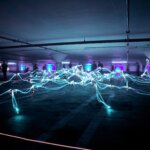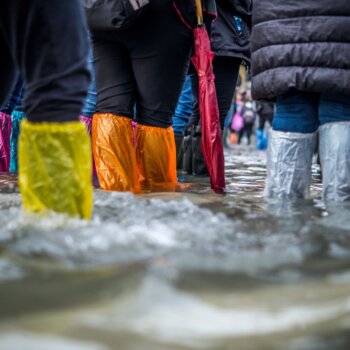Key Takeaways:
- According to researchers, most visitors spend less than 30 seconds on average looking at an artworkwhile visiting a museum.
- Paintings conservators often spend hours looking at a picture, often with low magnification, in order to assess the painting’s condition and how it was constructed.
- The X-radiograph shows that there is fibrous material between the wood of the panel and the priming layer, which is a gesso layer that was applied to prepare the panel for painting.
- Initially, he painted Christ’s foot and calf in front of the book held by the Virgin, while in the final version of the painting, the book obscures the lower leg from view.
- This alteration, among other compositional changes, suggests that the painting in the National Gallery is the first version Bronzino made.
According to researchers, most visitors spend less than 30 seconds on average looking at an artworkwhile visiting a museum.
In contrast, conservators, whose work involves understanding how artworks were made, can spend hundreds of hours looking closely. In addition to examination with our eyes, painting conservators also use different imaging technologies to see the interior structure of paintings and peer below the paint layers. We recently used several techniques to examine Agnolo Bronzino’s Virgin and Child with Saint Elizabeth and Saint John the Baptist, which was acquired by the Getty in 2019. This close looking can inform conservation measures taken to ensure the painting’s preservation and also provide new insights into the artist’s practice.

Close looking with the naked eye is a critical first step in the examination of a painting. Paintings conservators often spend hours looking at a picture, often with low magnification, in order to assess the painting’s condition and how it was constructed. We carefully examine the texture and color of the paint. We look for information about how the paint was applied (whether with a brush or another tool), how the paint was built up or layered, and whether it was allowed to dry between layers or blended together while still wet. Taken together, these subtle clues provide a better understanding of the artwork, which is the basis for contextualizing any further study.
Using a microscope to enhance visual observations is an important part of the process. For example, in Bronzino’s Virgin and Child, a red paint layer becomes visible underneath parts of the Virgin Mary’s blue robe. This may show that the artist was following an established painting practice in Italy: layering red or pink paint under blue was a method sometimes used by Italian painters to add a subtle warmth.

Looking at the back of Virgin and Child, we see that the work is painted on a wooden panel. While it may appear at a quick glance to be made from a single piece of wood, digitally X-raying the painting shows that the work is painted on three wooden boards joined vertically. Three original rectangular dowels along each join secure the boards to one another internally, and two horizontal crossbars span the back of the panel.


The X-radiograph shows that there is fibrous material between the wood of the panel and the priming layer, which is a gesso layer that was applied to prepare the panel for painting. As seen in the detail below, this material appears in the X-radiograph as fine dark lines. It is likely animal hair or a vegetable matter called “stoppa” that would have been applied to the panel to help bridge joins and defects in the wood. This material reinforces the panel and adds stability to the support. The construction appears to be quite common for 16th-century Italian panels and likely would have been done by a specialist who prepared the panel according to the artist’s specifications.

Another imaging technique called infrared reflectography looks beneath the visible layers of paint and detects materials that absorb infrared radiation. This technique reveals that Virgin and Childcontains extensive preparatory drawing underneath the paint layers. This underdrawing was mostly carried out with a dry medium, such as graphite or black chalk, and is consistent with what we know of Bronzino’s artistic practice. It reveals intricate details such as individual curls of hair and fingernails.


The X-radiography and infrared reflectography also tell us something new about this painting. Bronzino revised and refined the composition as he worked. Most significantly, he changed the positioning of the Christ Child’s left leg. Initially, he painted Christ’s foot and calf in front of the book held by the Virgin, while in the final version of the painting, the book obscures the lower leg from view. This particular detail is meaningful because it represents a departure from the composition in a related painting by Bronzino in the collection of the National Gallery, London. This alteration, among other compositional changes, suggests that the painting in the National Gallery is the first version Bronzino made. Although he initially repeated the composition in the Getty’s painting, the artist then modified it.
Other types of analysis are in progress and will provide an even greater level of detail about materials Bronzino used, such as information about specific pigments. While gathering this data, we will return to looking closely at the painting again and again to consider how this new information contributes to our understanding of the artwork.

So next time you view a painting, look closely. What can you discover?




























